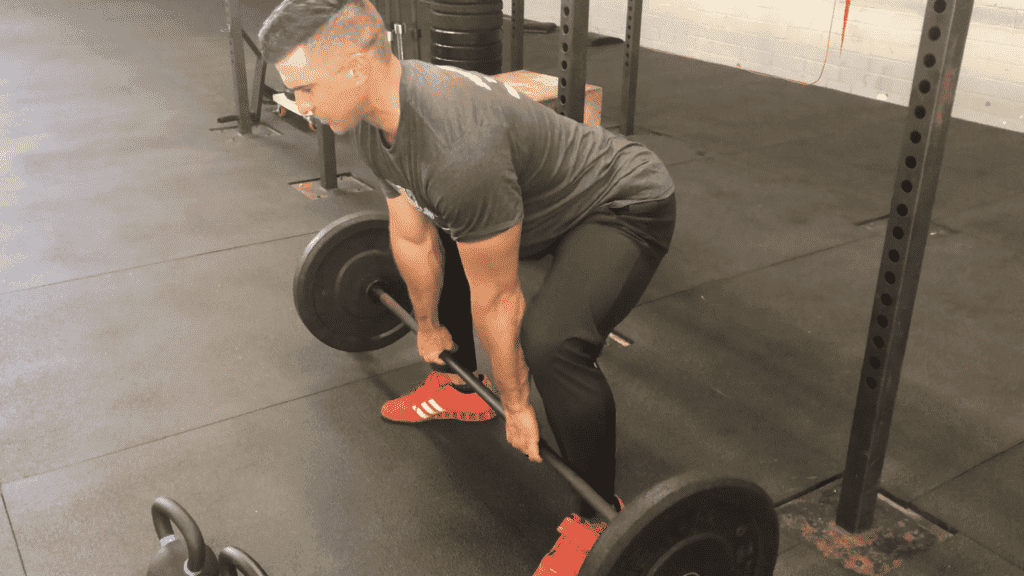Squatting Movements by Justin James

Squatting movements and leg days are often people’s least favorite days at the gym. But, these actions need not be overly complicated. Although ideal for many, we don’t have to perform a full barbell back squat to strengthen our squatting patterns. The general rules for proper squatting form are as follows:
1) Feet slightly wider than shoulder width
2) Toes at a 30-degree angle pointed outward
3) Knees “break” or stay in line with toe line (don’t let knees dive inward)
4) Heels stay planted for entire squat (don’t come up on the toes)
5) Lower back arched and chest puffed out (great posture, no slouching).
As we begin our squat, our knees “break” outward toward the direction of our toes, and our backside begins to “sit” backward. As we descend, our knees continue to move laterally away from each other, and our posture stays perfect, with our chest up and our lower back arched. Our heels stay on the ground, and we push up from the floor with our mid foot, rather than from our toes. We can begin simply by performing a body squat. When we can perform 10 perfect reps, let’s graduate to a 15-lb dumbbell or kettlebell that we hold to our chest. This is considered a “front squat” pattern, because the weight is held in front of us. Front squatting, whether with a barbell, dumbbell, or kettlebell, will place more emphasis on the quadriceps, while “back squatting” (when the barbell sits on our shoulders behind our neck), loads our glutes and hamstrings more than a front squatting pattern.
Our goal in squatting is a full range of motion below parallel squat. Rather than being harmful to the knees, this puts our knees in a more neutral position and lets the glutes and hamstrings fire properly to get us back to a standing position. Performed properly, with our knees pushing wide and outward at the bottom of our squat, the below parallel squat is safe for any individual. However, we must not compromise posture for range of motion.
A full range of motion (for a specific athlete) is as deep as the individual can go while maintaining proper posture (no slouching or low back bend) and foot position (flat on the floor, weight in mid foot.) As we train with proper squatting patterns, our range of motion should increase over time. We don’t have to use a full range of motion with every squat, as variants such as box squats and squat jumps are useful for adding power and strength. However, the athlete should always strive and possess the ability to perform a squat below parallel.
For an athlete with limitations, such as knee or mobility issues, a box can be utilized. The box can be placed at different heights but most often at the athlete’s max range of motion, right before he/she begins to lose posture or foot position. As the athlete descends to the box, he/she slowly “sits” on the box to take pressure off of the knee. The athlete will then re-engage the ground, taking pressure off of the box and establishing tension through the legs and posterior chain, and then ascend to the standing position.
For those with mobility issues, a key mobility exercise is the squat to stand. In a standing position, bend over and grab your toes or ankles. Drop into a max range of motion squat keeping your elbows inside of your knees while still gripping your toes or ankles and maintaining good posture. At the bottom of the squat, push your knees open with your elbows. This will open your hips and establish the mobility requirements needed for a full-range squat.
Squats can be performed with a number of different instruments. The important factor is to maintain healthy fundamentals and avoid using exercise machines as a primary source. Our goal is to load and stress our entire skeletal system systematically to enhance bone mineral density and promote a positive hormonal response. Machines take the load off of the body and place stress on muscles individually. While this has positive implications for body building, it isn’t “functional” and too many make the mistake of making secondary machine exercises primary ones.
Repetitions should be intense with low overall volume. Rather than performing 10 sets of 10 reps with light weights, perform 4 sets of 5 reps or fewer with a heavier load. You will become stronger and, because you aren’t as fatigued, your chance of injury will decrease.
Finally, practice! Work squatting movements often, either through resistance training as your primary movement in a training session or in mobility work using body weight on days you are training other movements. The more you practice, the better you will perform, and the more you will enjoy one of life’s most essential movement patterns.


